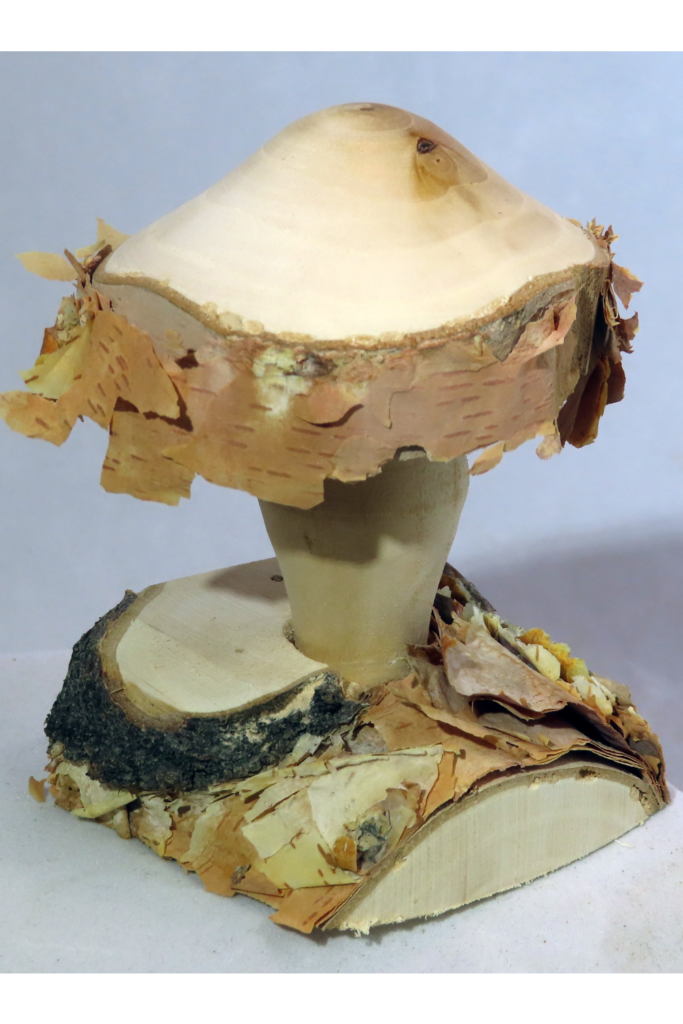Woodturning Tall Eccentric – Multi-Axis – Candlestick
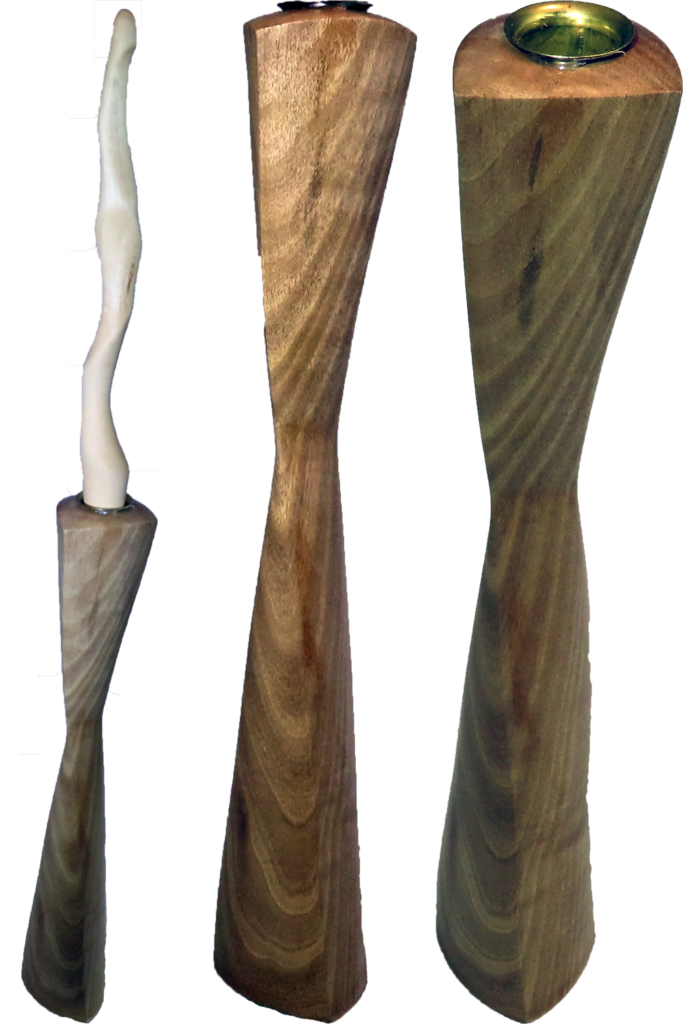
In case of difficulty viewing this post, it is also posted on YouTube and FaceBook.
Eccentric turnings are both fun and scarey. One one hand they are unusual and interesting shapes. On the other hand, turning wood off-center is scarey. A lot of air gets sliced.
This is based on Barbara Dill’s book. She has categorized several types of eccentric turnings.
In this project, three additional axes are used. All are offset from the center out to about 3/8″ in from the edge. One end is also twisted about 60 degrees.
I believe the wood is butternut. It came from my walnut pile but does not have the typical dark walnut color.
Hand sanding was required to smooth out the spindle. For 80 and 120 grit, I used a small flat block of scrap wood that I could wrap the sandpaper around. Otherise, even machine sanding would leave nasty waves.
This candlestick is about 13″ tall and 2″ diameter, finished with shellac and buffed. A metal cup protects the wood from candle flame.
I will show the candle in a separate video.
Enjoy!
Woodturning Perfect Hollow Sphere – No Expensive Jig
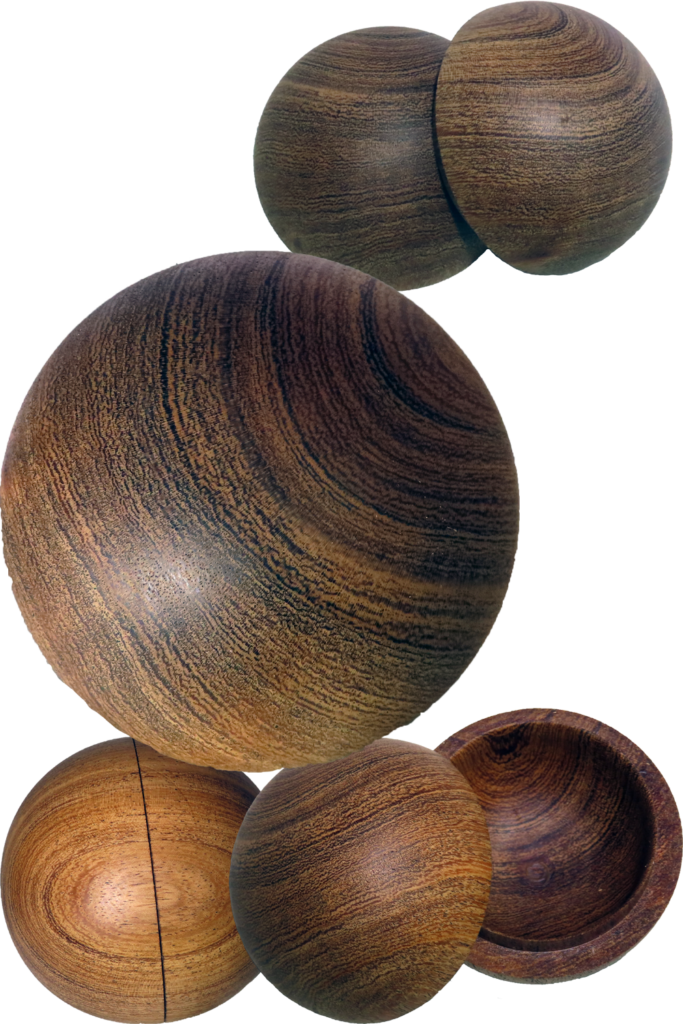
In case of difficulty viewing this post, it is also posted on YouTube and FaceBook.
For this project I turn a 2.7″ sphere from mesquite using the octagon method. I interrupted the octagon method to split and hollow the sphere. The sphere is finished with beeswax and mineral oil mix.
Important measures for octagon method.
- Distance from end of cylinder to nearest octagon corner
Diameter * 0.293 - Length of octagon sides
Diameter * 0.414
Cup Centers
- Any scrap wood held in a chuck with recess to hold the sphere.
Link to Basic Sphere Video
Rotating Live Center
- Penn State Industries #LTCA18
- Live Tailstock Chuck Adapter: 1 in. x 8tpi – #2MT Shaft
Beeswax/Mineral Oil Mix
- Shred 1/4 pound beeswax into double boiler.
- Add 1 pint mineral oil.
- Stir occasionally until creamy consistency. Let cool.
- Or put in hot attic for two days stirring a couple of times until creamy consistency.
- Do not use direct heat on wax. You risk a fire and burns.
Enjoy!
Segmented Woodturning Meets 3D Print In A Labyrinth Maze
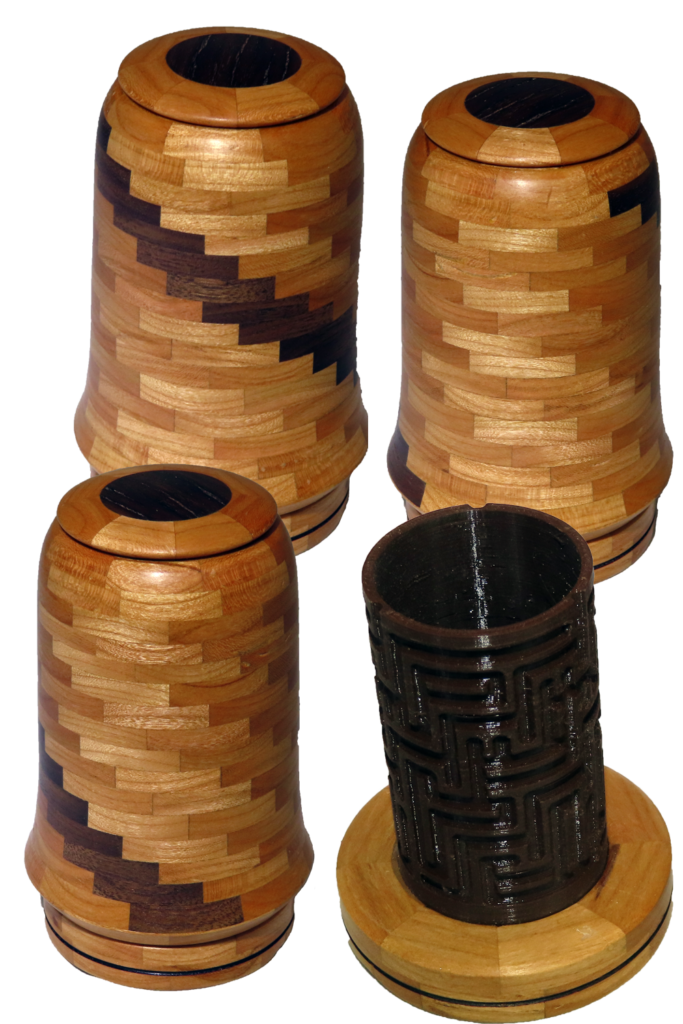
In case of difficulty viewing this video above, it is also posted on YouTube (link) and FaceBook (link).
I have a 3D printer and explore Thingiverse for useful items that I can print. One very interesting item is a labyrinth maze where I have to blindly manipulate through a maze to open a box. The maze is only apparent after the box is open.
However, I was not happy with simply printing a maze. I like to customize the maze and incorporate it into a woodturning project. It took me a little while and a lot of experimenting to write Java software to design the maze, write OpenScad code to render the 3D object, and print it on my Prusa 3D printer. That was only the “soft” part. Then, for this project prepare 7 segmented rings of 8 segments each for the turning part of the project.
The labyrinth maze is about three inches diameter and five inches tall finished with shellac friction polish. The principal wood is cherry; the accent wood is walnut.
Enjoy!
Segmented Woodturning – Ring Height Makes A Difference
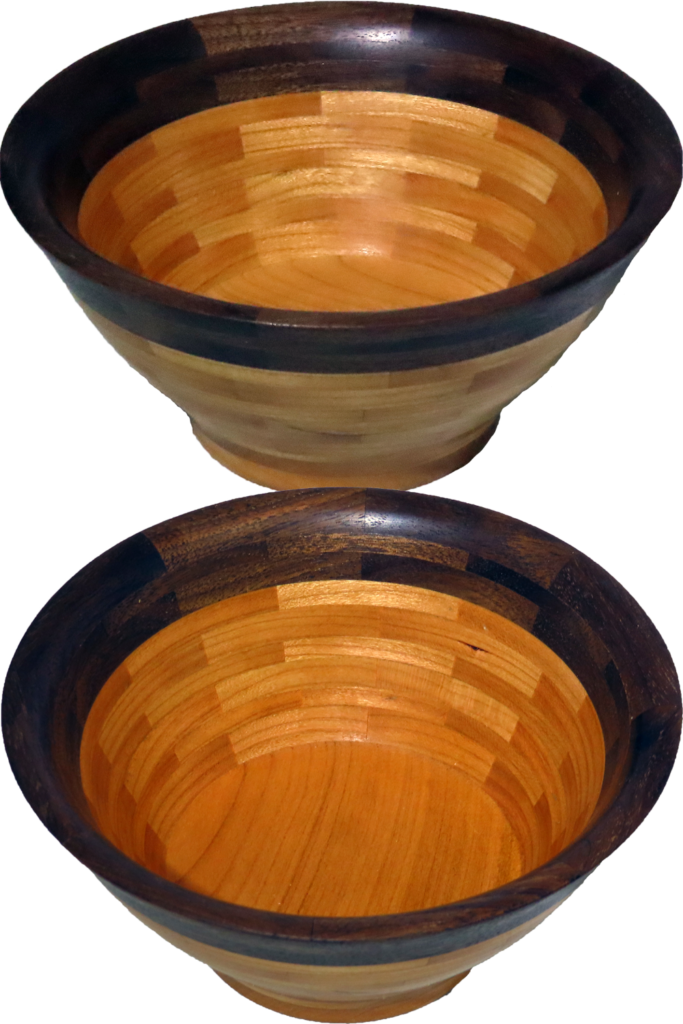
In case of difficulty viewing this video, it is also posted on YouTube and FaceBook.
After presenting an interactive remote demonstration entitled “Introduction to Segmented Woodturning”, I had three bowls left over. One was finished before the demonstration to show the final product. The second was completely glued up that we turned during the demonstration. And, the third was one that we glued up during the demonstration. Three bowls since we could not wait for glue to dry during the demonstration.
All three segmented wood bowls are from the same pattern, a simple pattern for this introduction demonstration.
This video uses the left over bowl to explore the impact of shorter but more frequent segment rings. The process is for emergency use only. as I prefer to size rings before gluing the rings into the vessel.
The bowls are about 6 inches diameter and three inches tall finished with walnut oil.
Enjoy!
P.S. If you would like an interactive remote demonstration for your club, please visit my Demonstrations tab for topics.
Woodturning Olive Vase Hollow Form From Wet To Dry
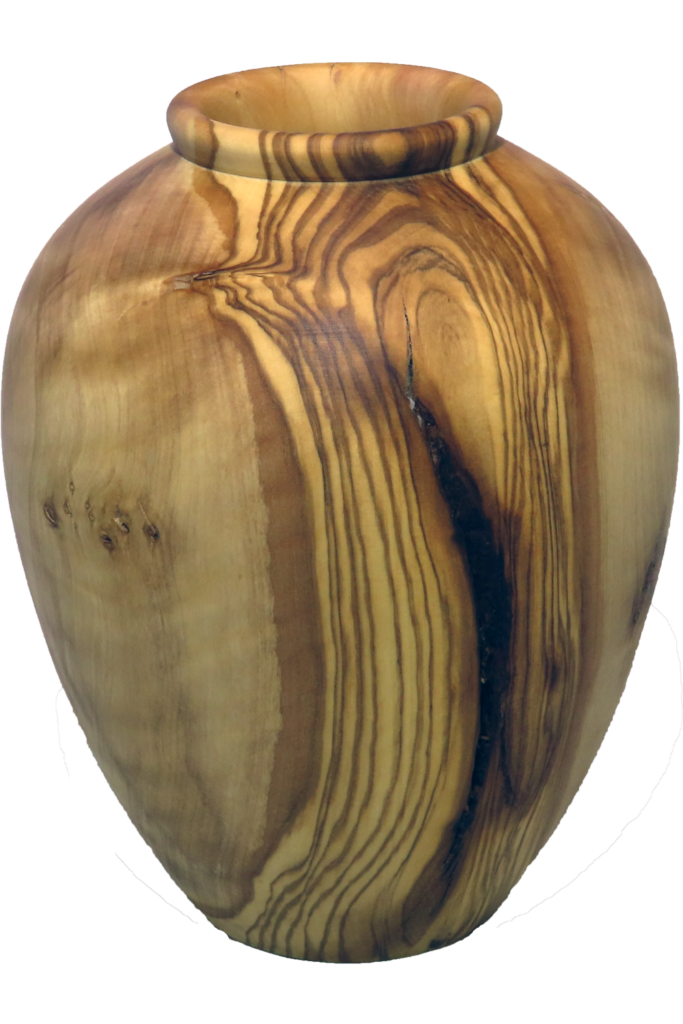
If the above video does not play, this video is also posted on YouTube(link) and FaceBook.
This olive wood came from the Phoenix, Arizona area. While rough turning the vase instead of a full hollow, I bored a 2 inch hole. At 2 inches, I can drive the Jacobs chuck into the vase without an extension.
The wet wood was sealed with Tree Saver Green Wood Sealer
from Craft Supplies USA.
Over 17 months, the wood lost 24% of its weight through moisture loss.
Fortunately, no crack developed in the base.
This vase is approximately 5 inches diameter and 7 inches tall, finished with walnut oil.
For the steady rest, please see my video
Woodturning – My DIY Steady Rest Is Still Steady
Enjoy!
Woodturning Jewelry Tray In Zebrawood
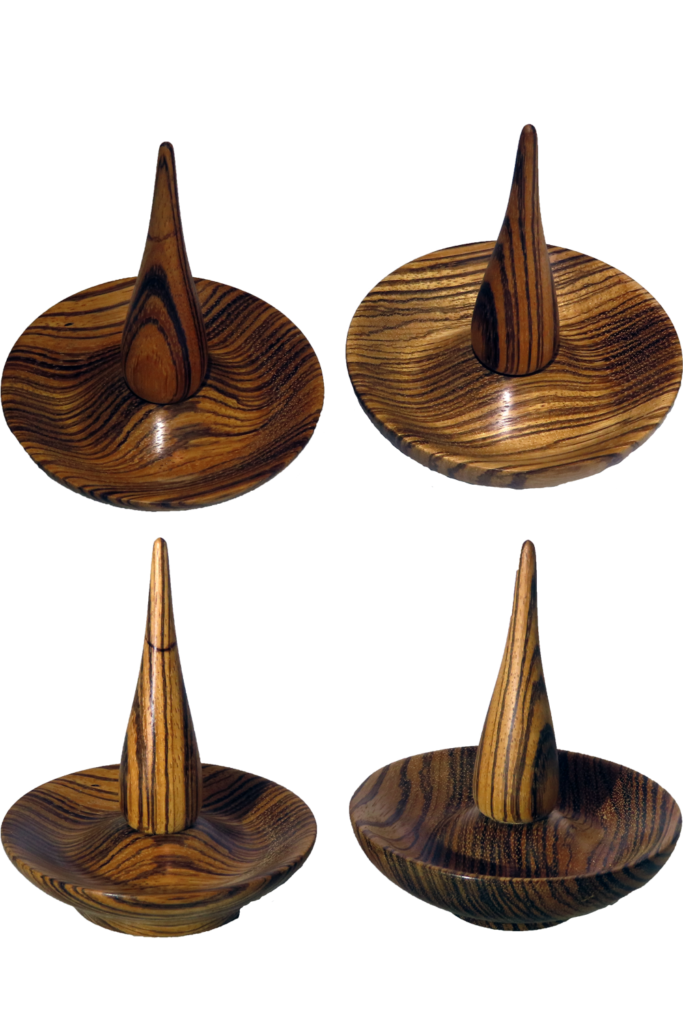
In case of difficulty viewing this video, it is also posted on YouTube(link) and FaceBook(link).
With several weddings approaching, I need to turn more jewelry trays. I like them because they are unique gifts that no one else will be giving. They are not difficult. As a small bowl and a short spindle, they do not take very long. Yet they have their own personality.
These are zebrawood for a distinctive grain finished with shellac. They are about 4 inches in diameter and 5 inches tall.
Enjoy!
Woodturning Triple Lobe Celtic Knot Segmented Vase
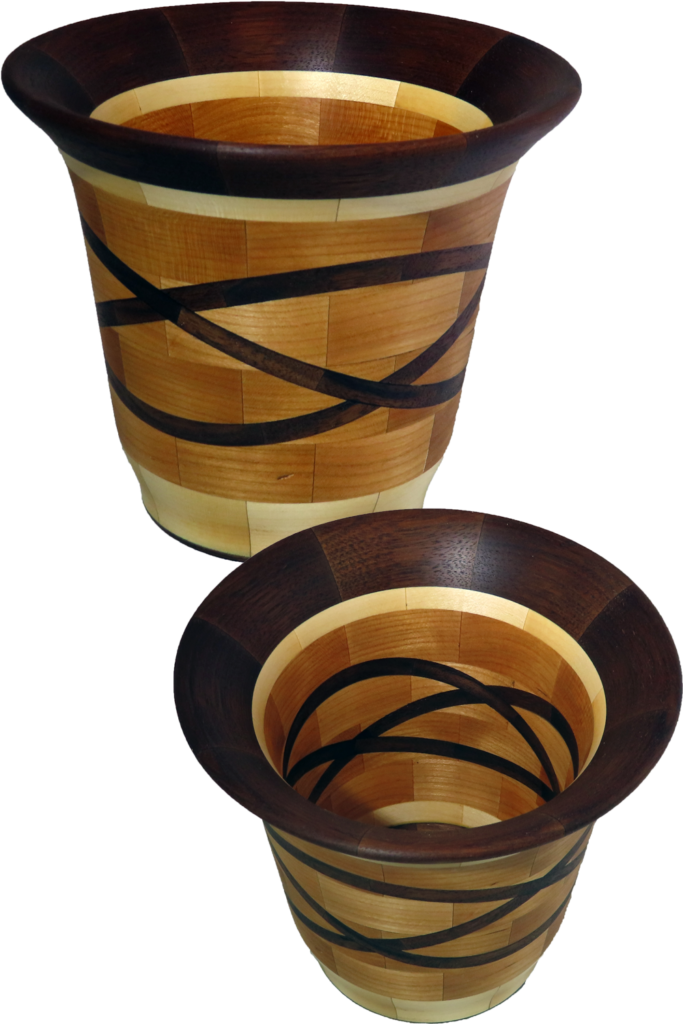
In case of viewing difficulty, this video is also posted on YouTube and FaceBook.
I have been working up to this project for several weeks developing a variety of techniques and processes. I first developed a N-Loop Celtic knot process in 2015. That process uses a table saw to produce perfectly formed Celtic knots. I know have expanded with a process for a band saw that enable larger diameter projects.
This is a segmented project with 104 segments of maple, cherry, and walnut, finished with walnut oil.
The jig uses a 3D printed knob that I have not seen anywhere else. I now make the knob available on Etsy at https://www.etsy.com/shop/AsWoodTurnsTools
I can present this process in detail in a remote demonstration.
Enjoy!
Woodturning Three Part Goblet From Walnut and Hazelnut
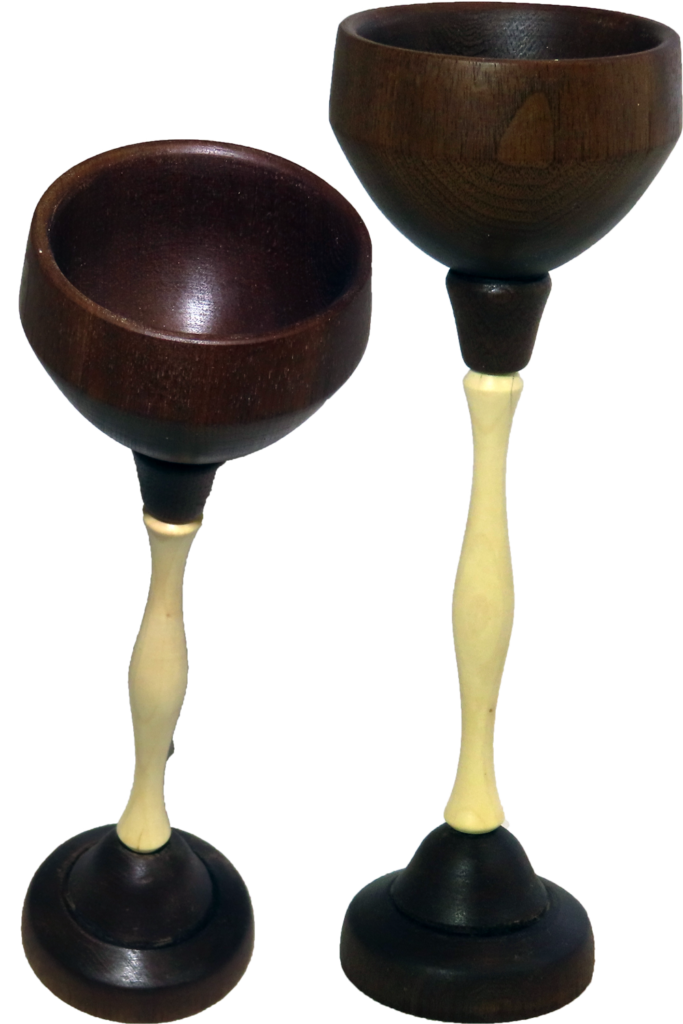
In case of difficulty viewing this video, it is also posted on YouTube(link) and FaceBook(link).
After I turned the goblet last week, one person asked if I could have salvaged the original or make it from multiple pieces. YES. Here we go.
This one is walnut for the cup and base; hazelnut for the stem. it is 2.5 inches by 7 inches finished with shellac.
I also used a 0.25″ #2 Morse Taper collet to hold the spindle. Worked much better and safer than a Jacobs chuck.
BTW
- #2 Morse Taper 0.25″ Collet: Little Machine Shop #1747, about $11.95
- Draw bar, 3/8″ all thread; Hardware store
- 3/8″ knob, DIY or purchase.
Enjoy!
Woodturning Stemmed Goblet From Walnut
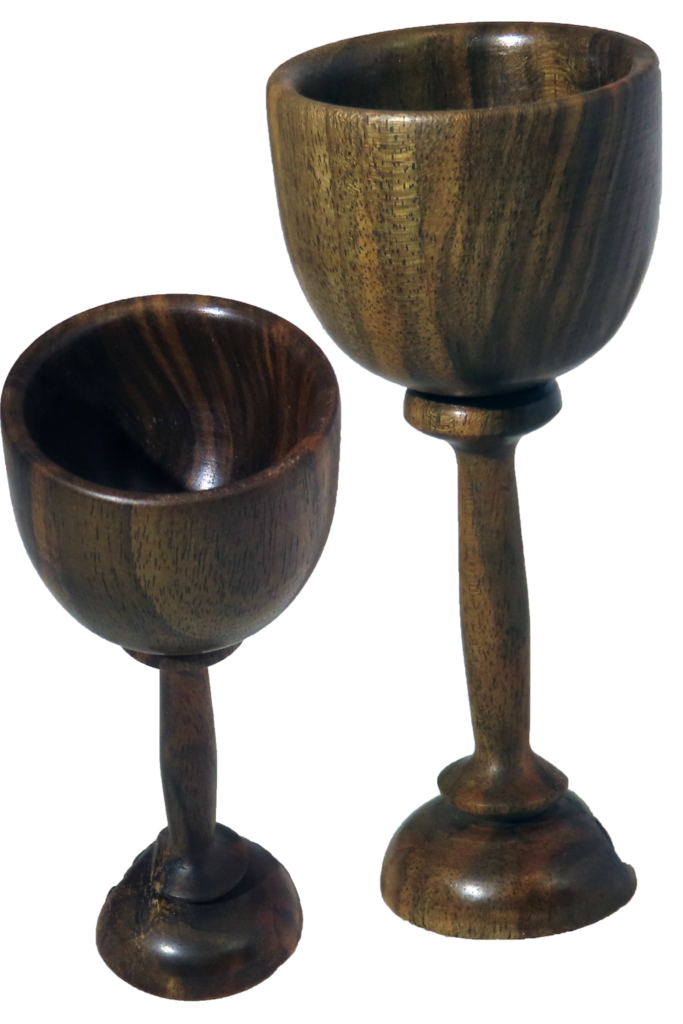
In case of difficulty while viewing, this is also posted on YouTube(link) and FaceBook(link).
Eight months ago, I started turning a goblet from fresh wet elm. At that time, I rough turned it and set it aside to dry. Now, it felt very dry. I thought it would be perfect to turn another goblet. However, the stem broke with a very clean cross break. Disaster.
What to do?
I went out to the scrap pile and found a small chunk of gnarly walnut, definitely dry. Could I turn a goblet out of this poor piece of wood?
The goblet is 2.5 inches by 5.5 inches and finished with shellac.
I turn a goblet from the top down to preserve strength in the stem.
This one survived. I am happy.
Enjoy!
